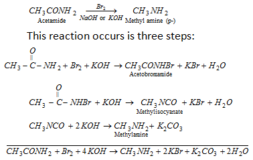Metallic bond-

source : you tube.com
Metallic bond
Explanation of physical properties of metals on the basis of Electron sea model-
i) Metallic lustre-
The lustre of metals is due to presence of delocalized mobile electrons. When light falls on the surface of the metal, the loosely held electrons absorb photons of light and start oscillating at a frequency equal to incident light.The absorbed energy is remitted in the form of visible light . So the incident light appears to be reflected from metal surface and the surface acquires a shining appearance which is known as metallic lustre.
ii) Thermal conductivity-
The thermal conductivity of metals is due to presence of mobile electrons .When a part of metal is heated ,the kinetic energy of the mobile electrons of that part increases.These energetic electrons move rapidly from hotter part to cooler part and transfer their kinetic energy by means of collisions with other mobile electrons . Thus heat gets conducted from one part to other part.
iii) Electrical conductivity-
The electrical conductivity of metal is due to the presence of mobile electrons.When a potential difference is applied across the metal sheet , the mobile electrons begins to move towards the positive electrode and these electrons are replaced by electrons coming from the negative electrode . This constitutes electrical conductivity.

source : Science HQ
iv) High tensile strength-
Metals have high tensile strength. Tensile strength means metals can resist stretching without breaking.High tensile strength of metals is due to presence of strong electrostatic force of attraction between the positively charged kernels & surrounding mobile electrons .
v) Hardness of metals-
Some metals are so soft even cut with knife like alkali metals but some are hard like Mn,Co,W etc.The hardness of metal is due to strength of the metallic bond . Stronger is the metallic bond ,greater is the hadrness of metal.
vi) Malleability & ductility-
Metals can be beaten into sheets, (malleability ) and drawn into wires (ductility). This property is due to non- directional nature of metallic bond.When any stress is applied on the metal, the position of kernels is altered without destroying the crystal. The adjacent layers of kernels slip over one another so crystal lattice gets deformed but electronic environment remains the same.The deforming force move the kernels from one site to another. Therefore metal can be beaten into thin sheets and can be drawn into wires.

source : chem.guide
Factors affecting strength of metallic bond-
a) Number of valence electrons-
The strength of metallic bond increases with increase in the number of delocalised valence electrons .
” Greater is the number of valence electrons for delocalisation ,stronger is the metallic bond.”
b) Size of kernel-
The strength of metallic bond decreases with increase in size of the kernel.
“Smaller is the size of kernel, greater is the attraction for the delocalised electrons. hence stronger is the metallic bond.”
Ex.- Kernels of alkali metals are bigger in size so they form weak metallic bond.
Limitations of Free Electron Theory –
i) This theory is unable to explain about the electrical conductivity of some metals which decreases linearly with increase in temperature.
ii) This theory is unable to explain why some metals behave as semiconductor.







